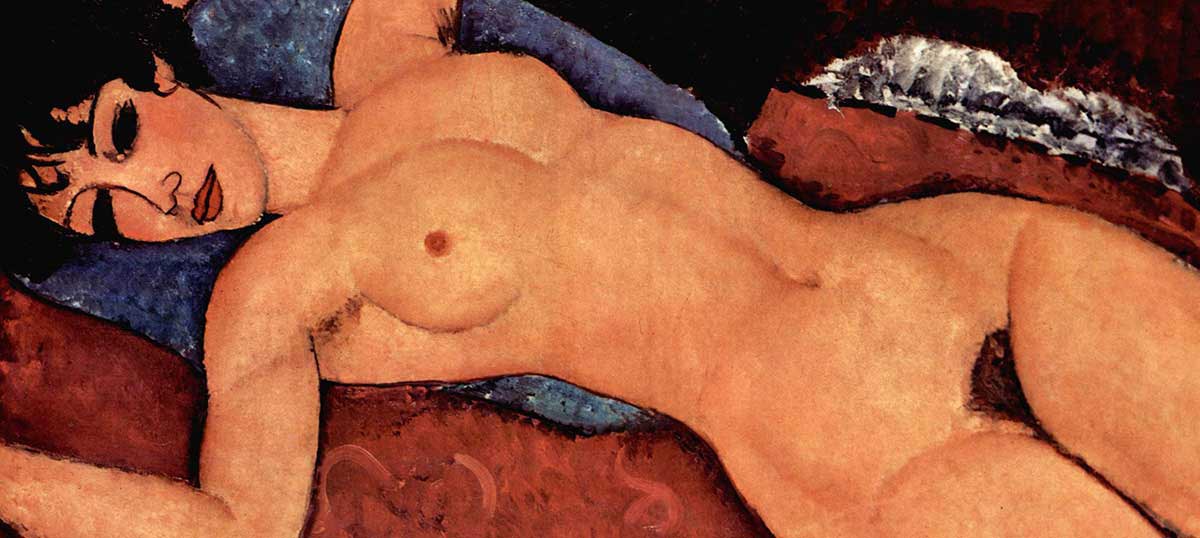
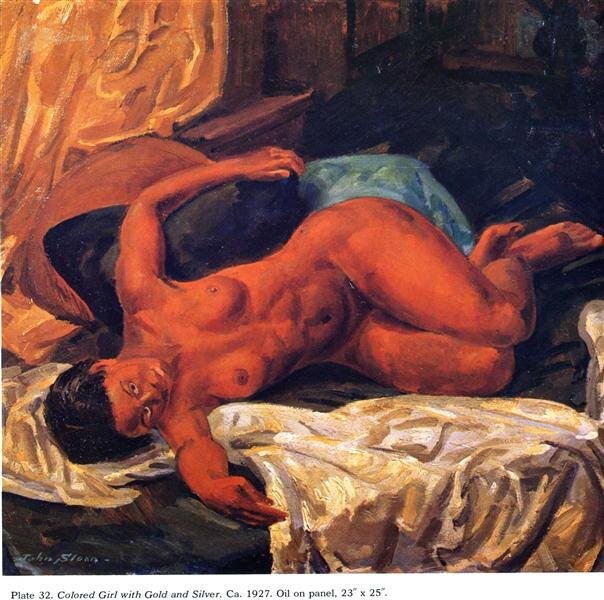
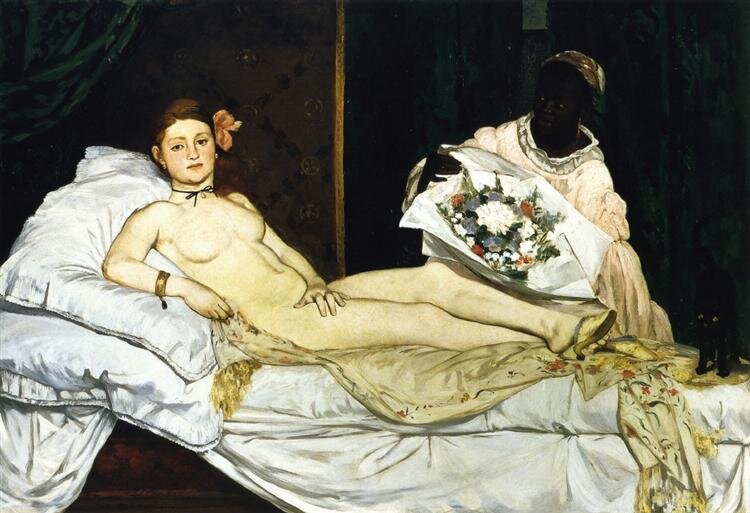
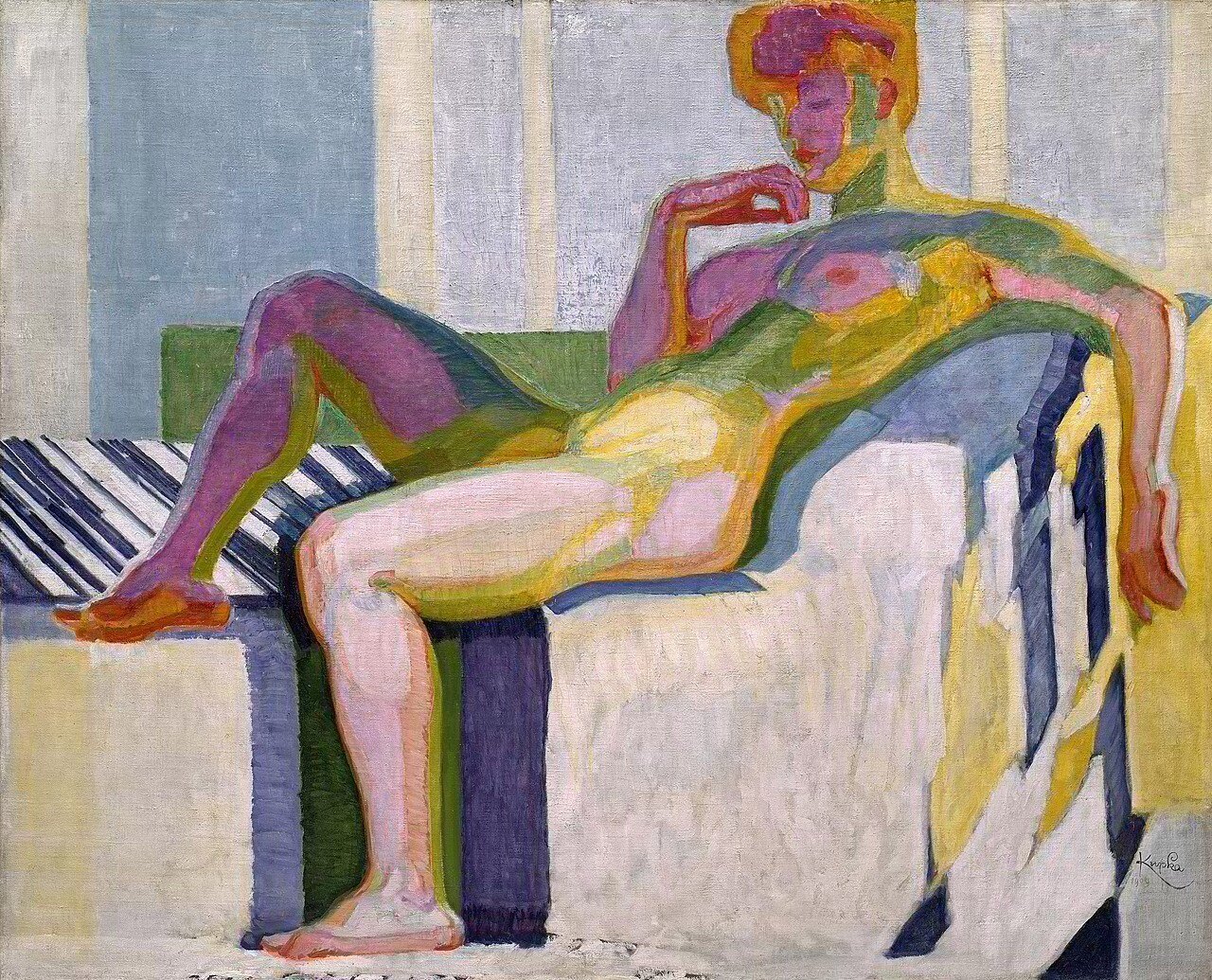
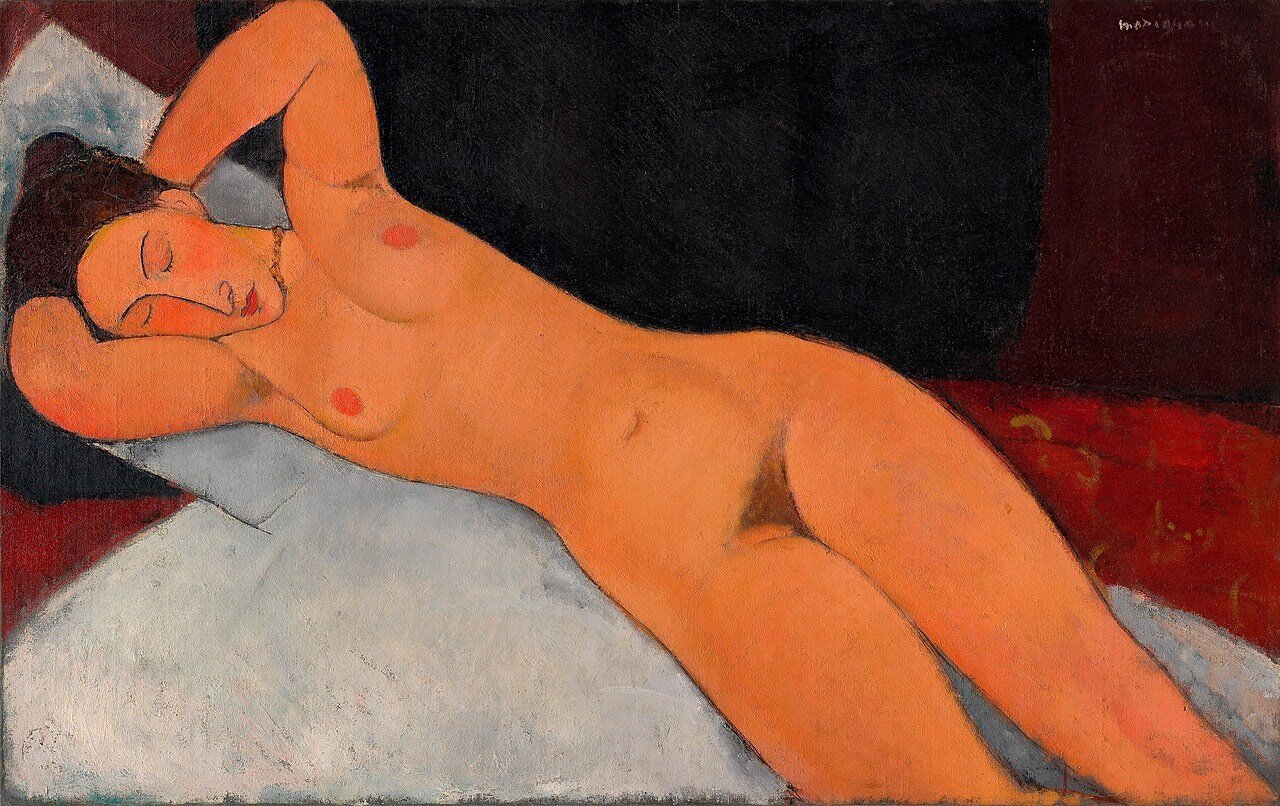
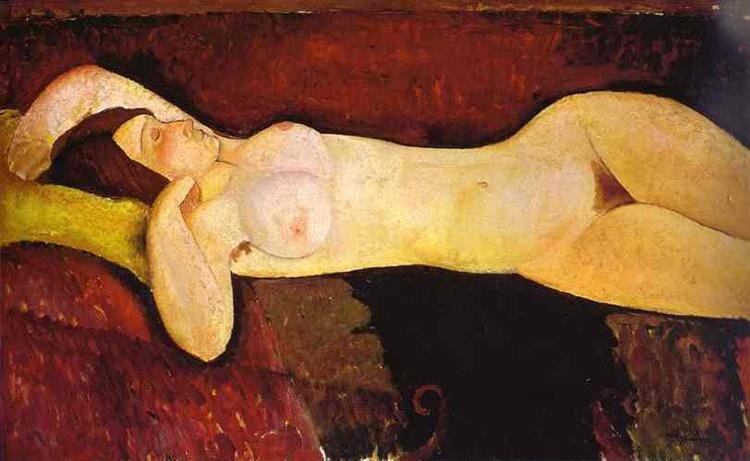
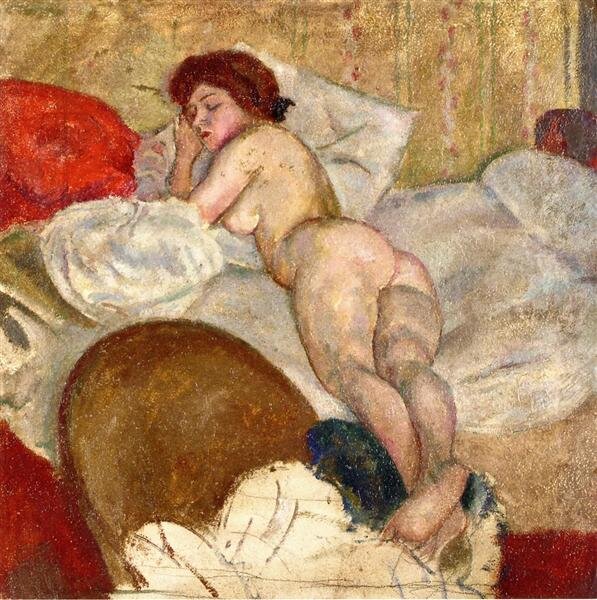
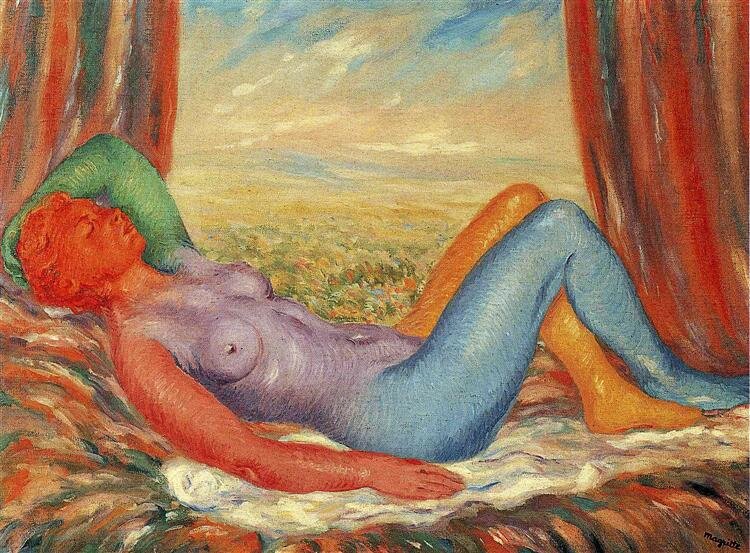
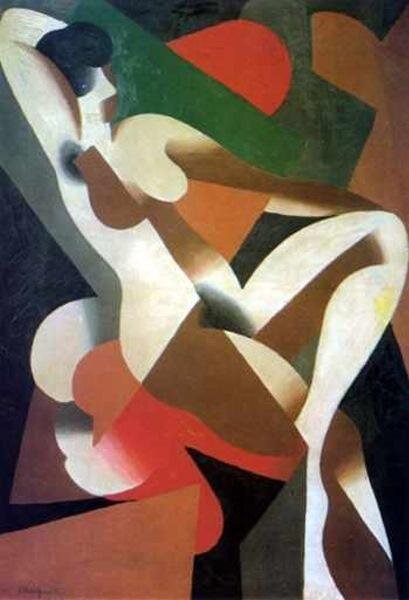
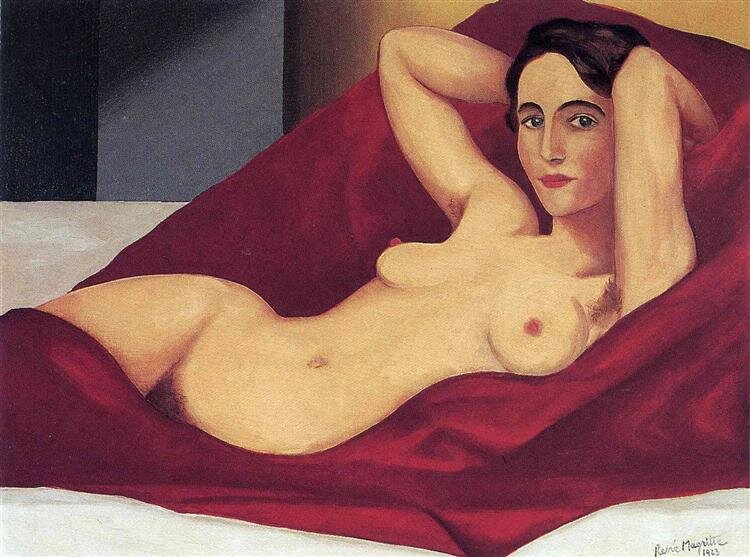

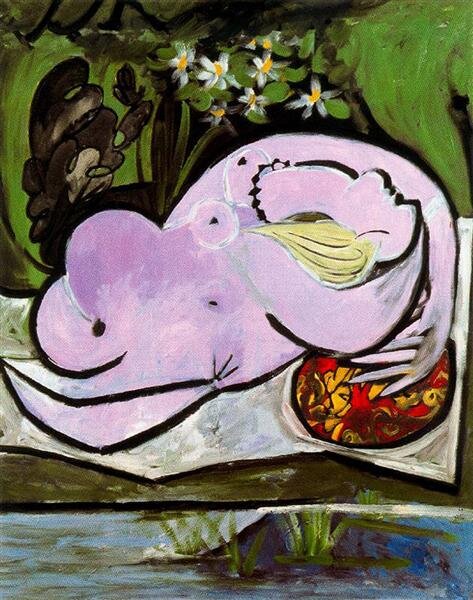
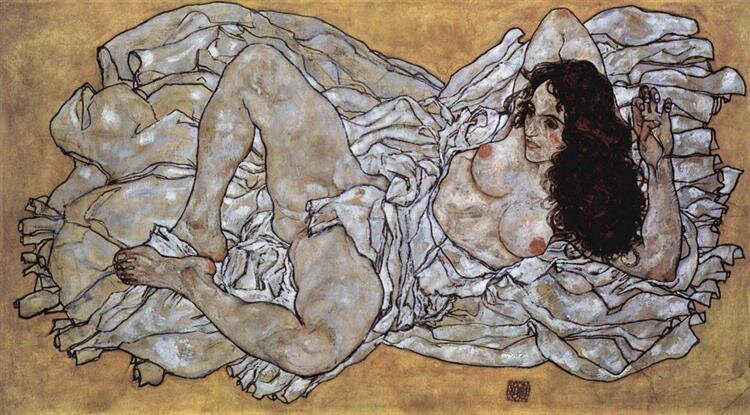
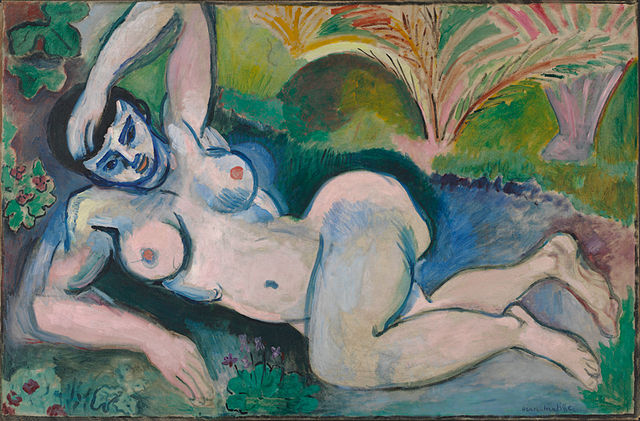
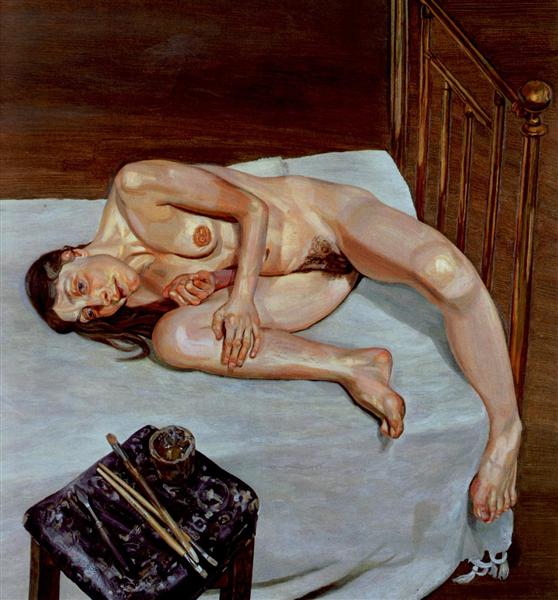
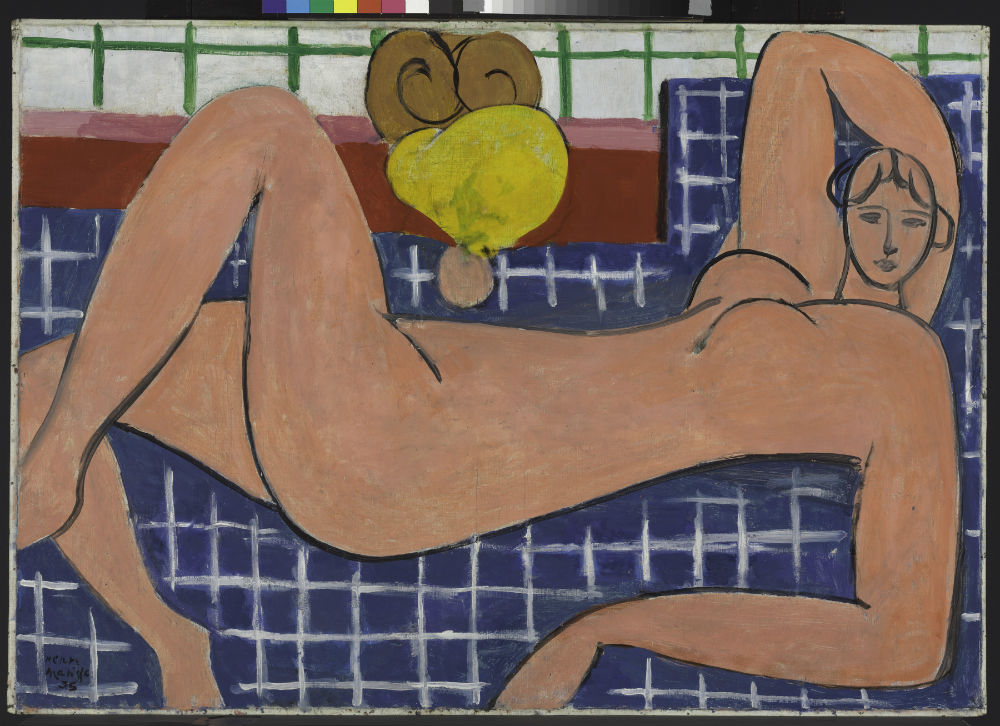
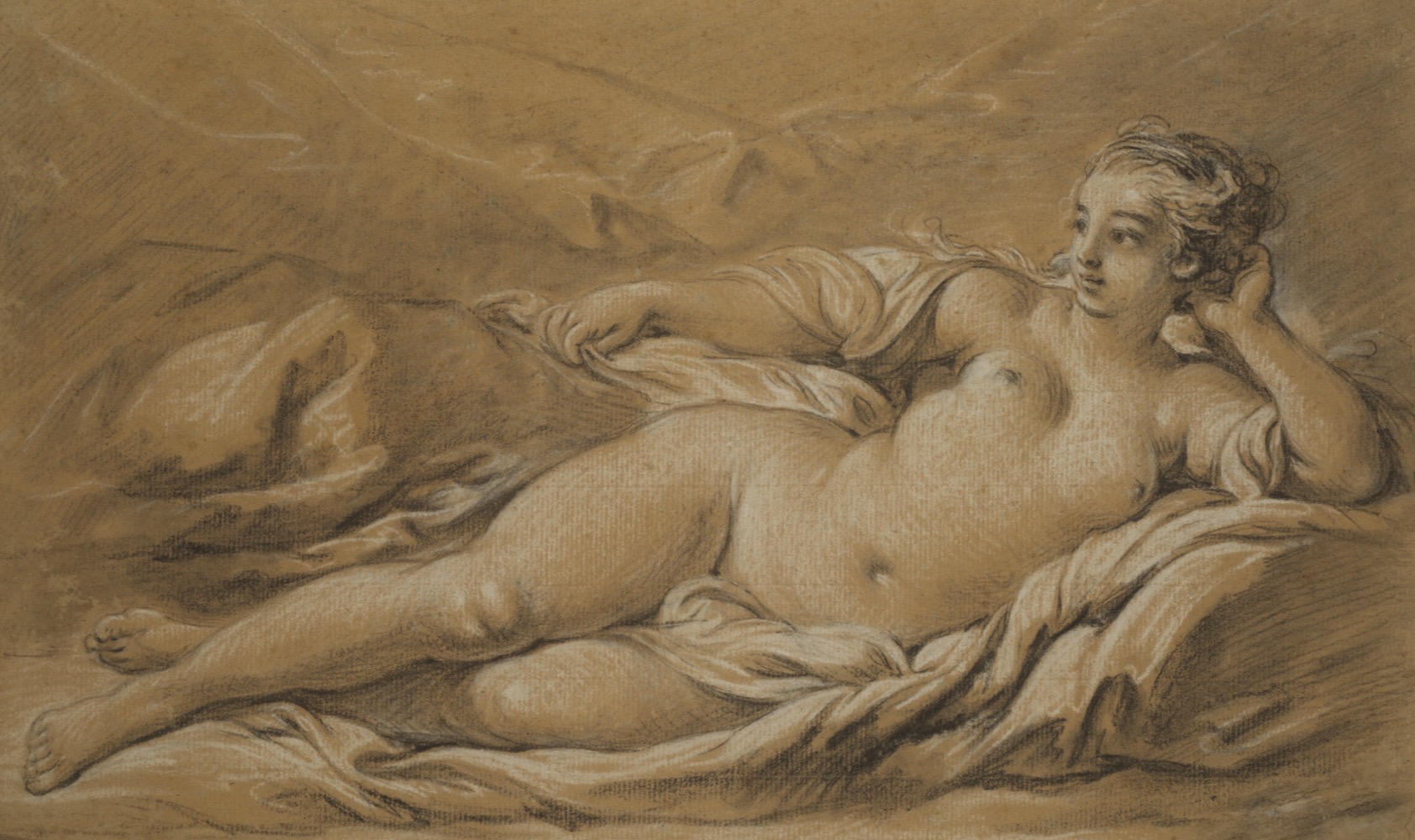

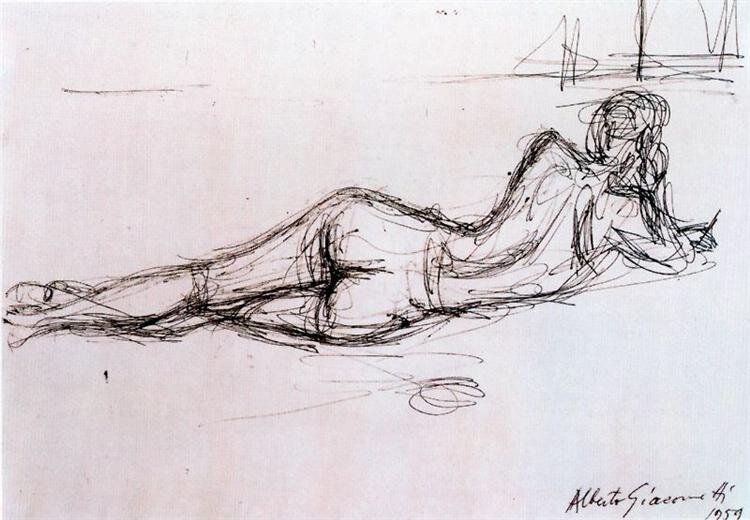
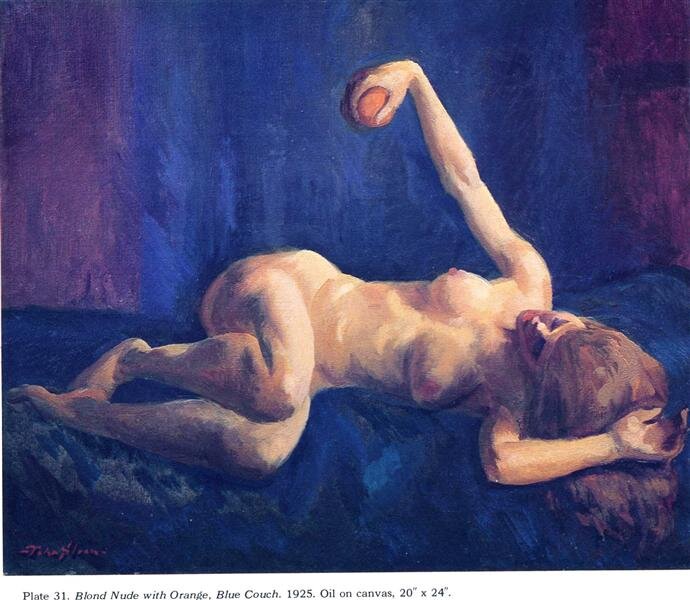

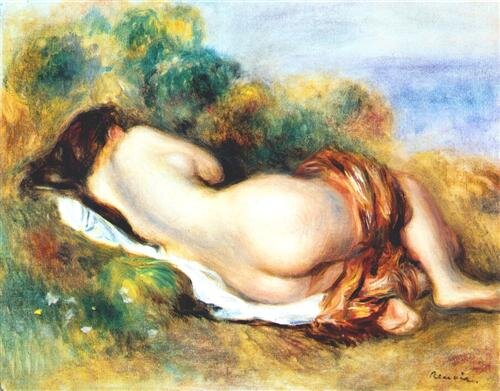
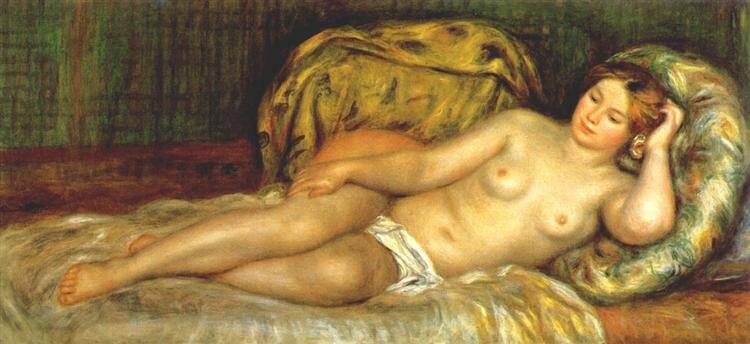
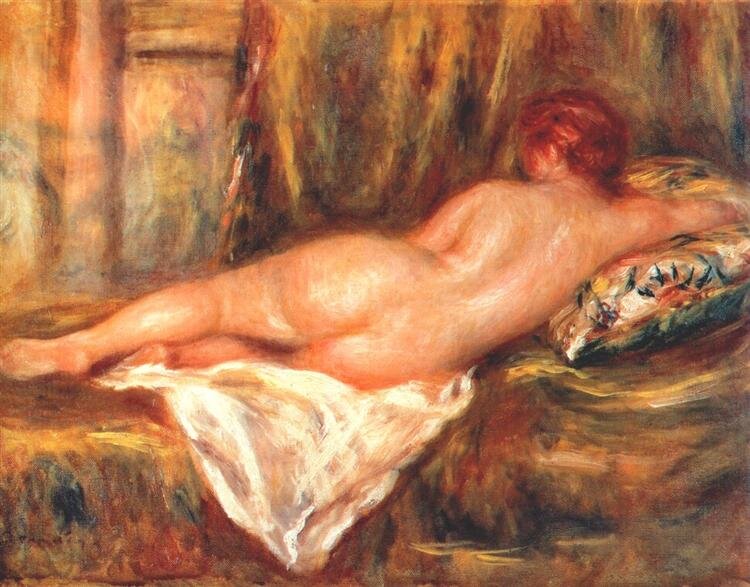
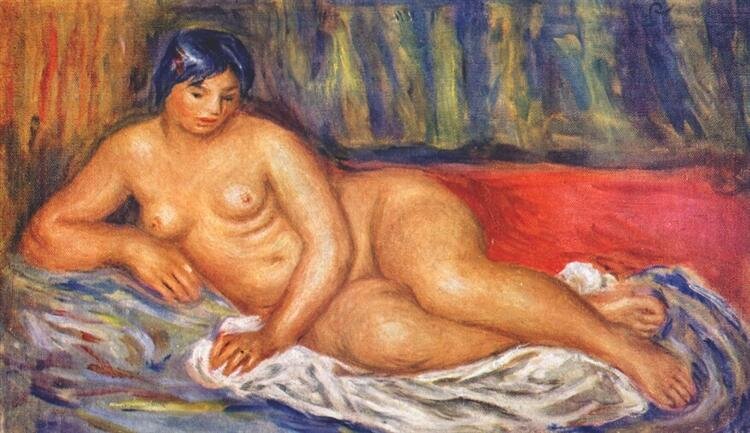
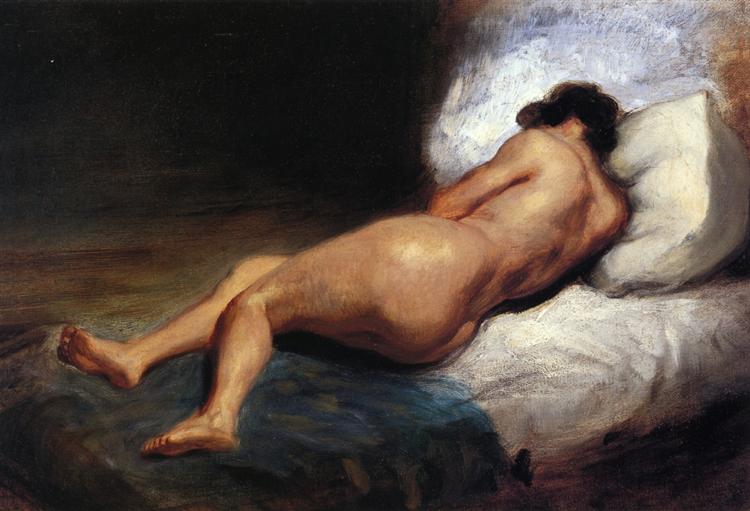
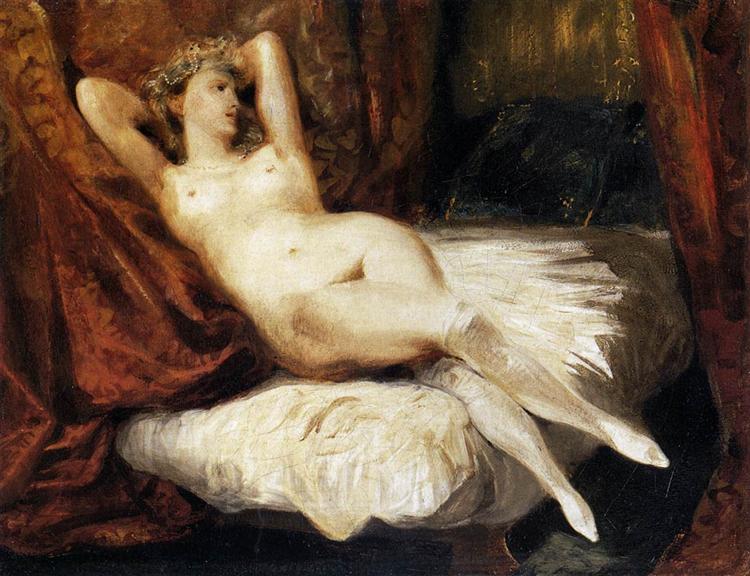
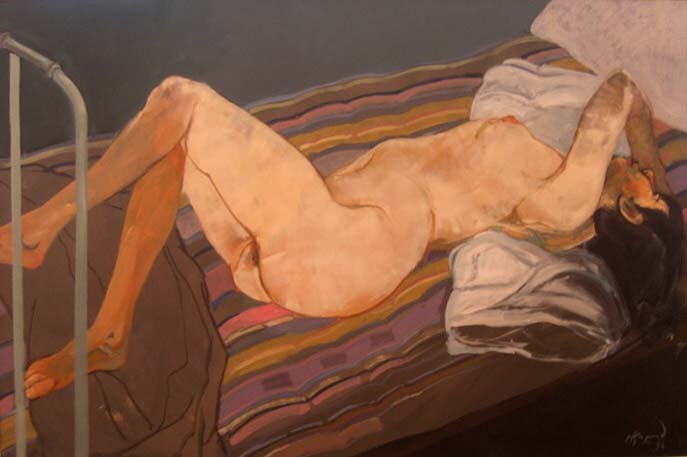
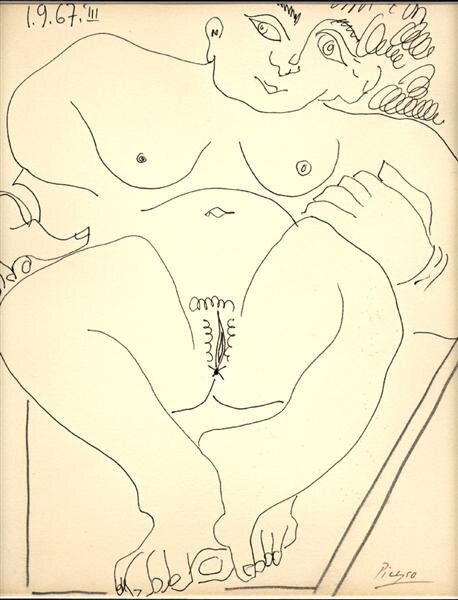
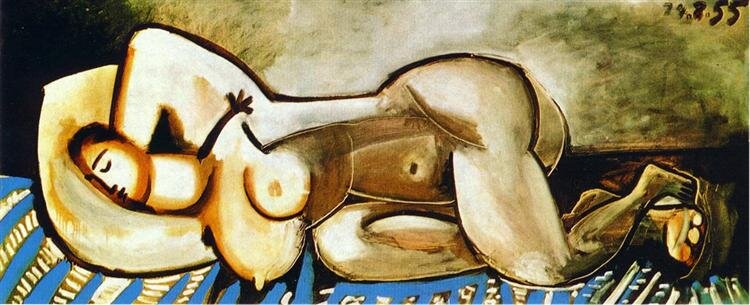
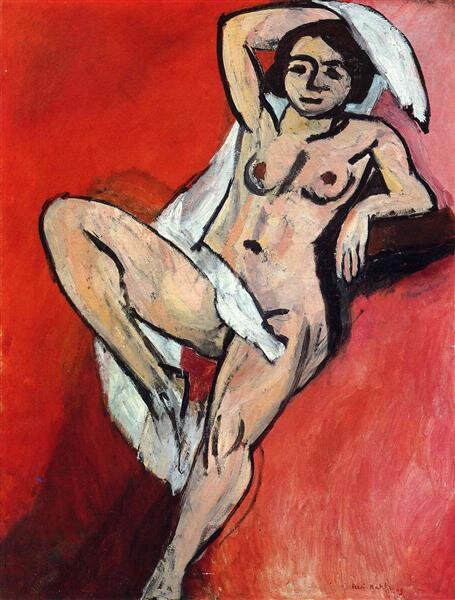
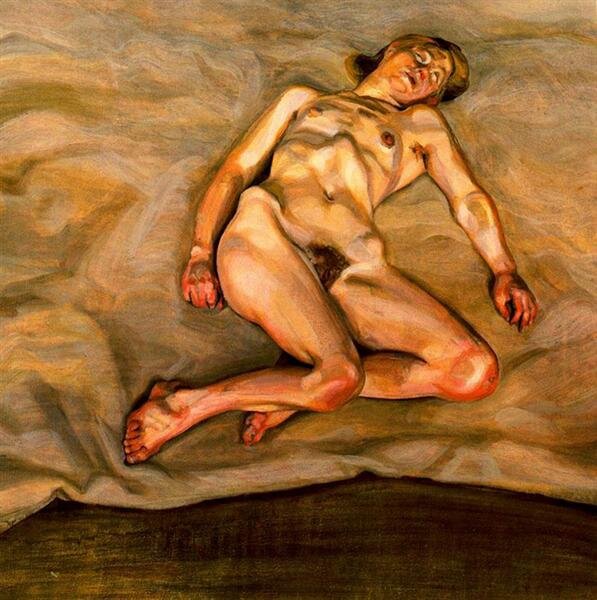

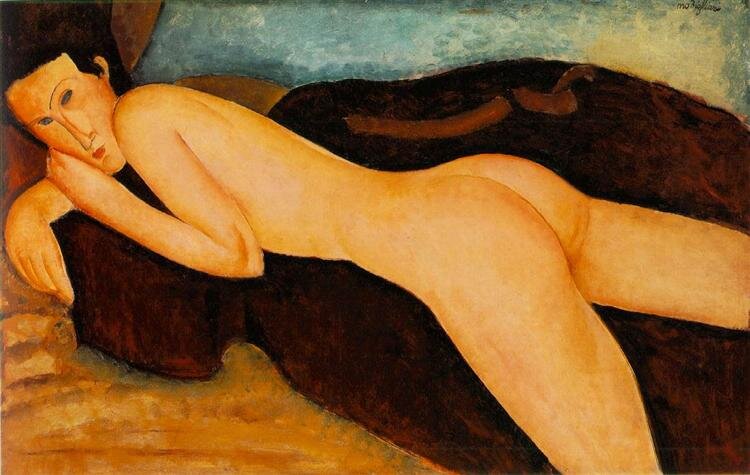
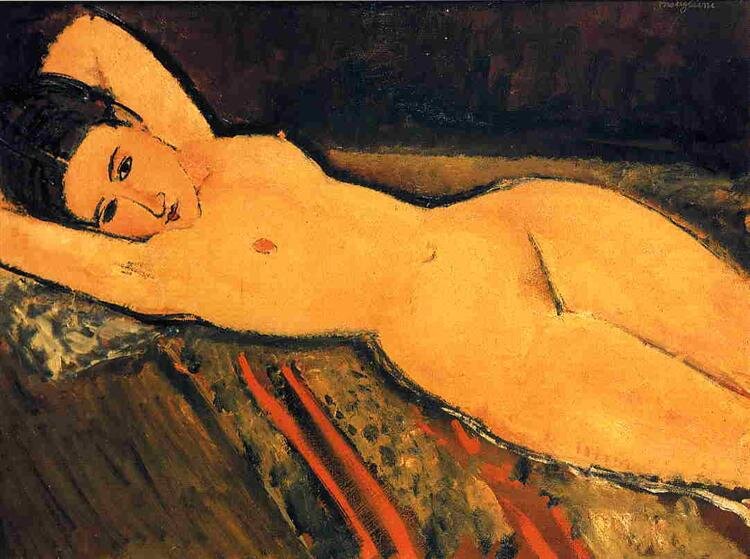
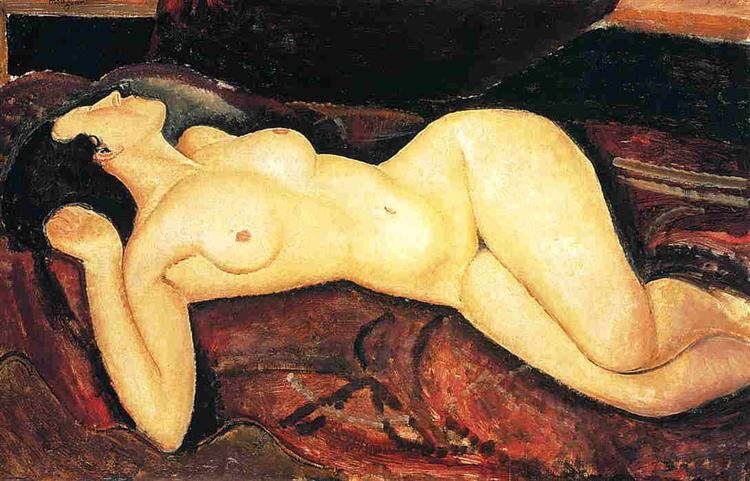
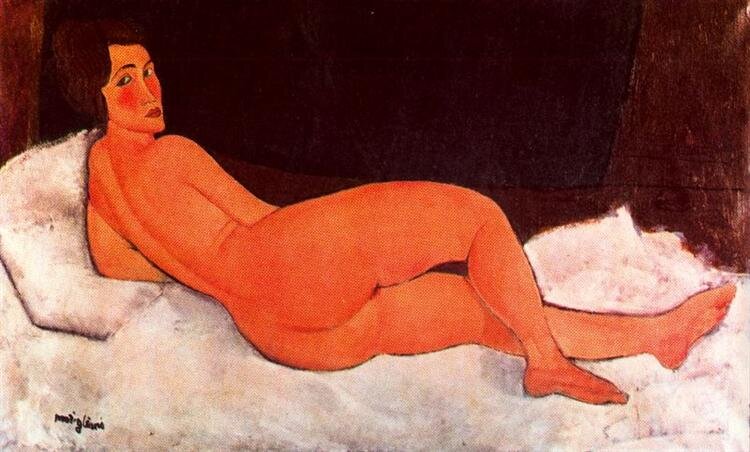
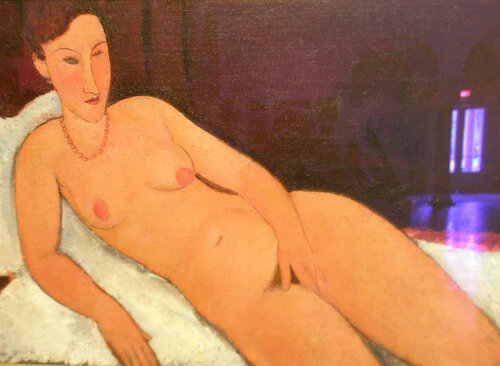
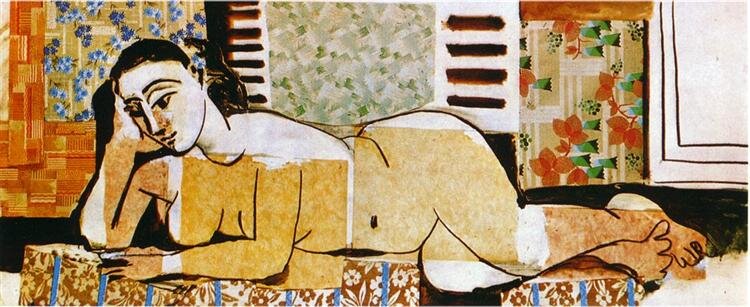
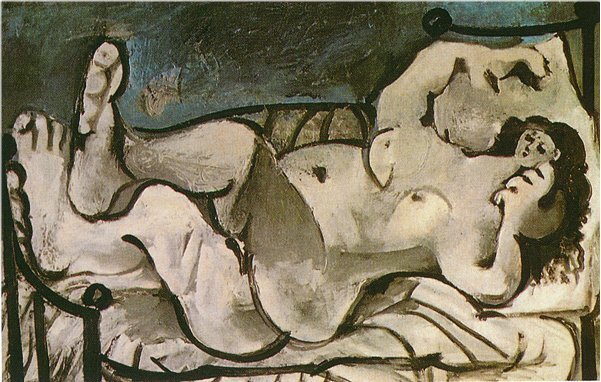
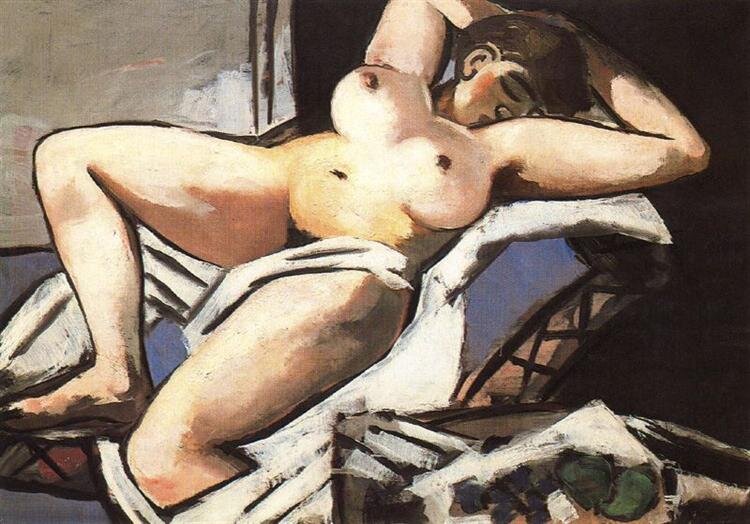
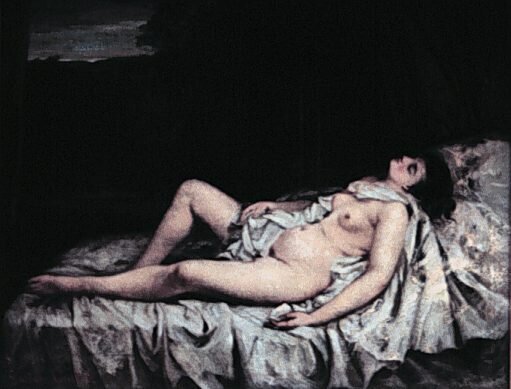
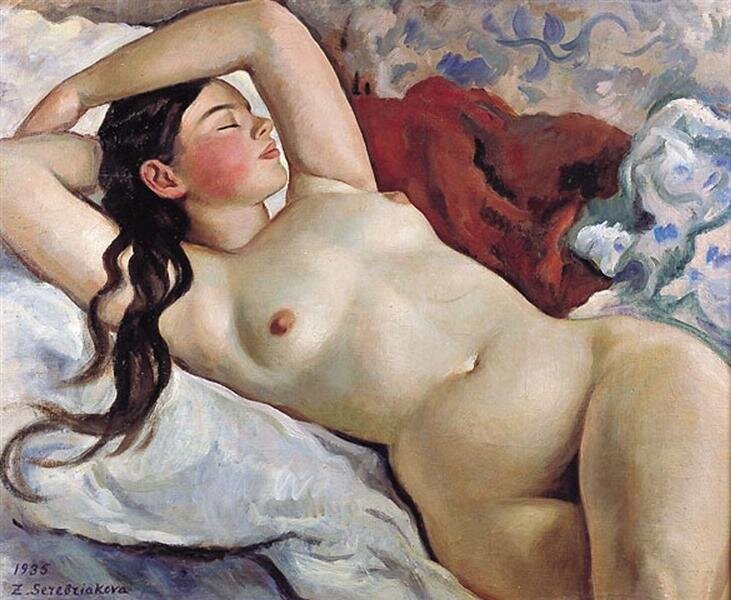
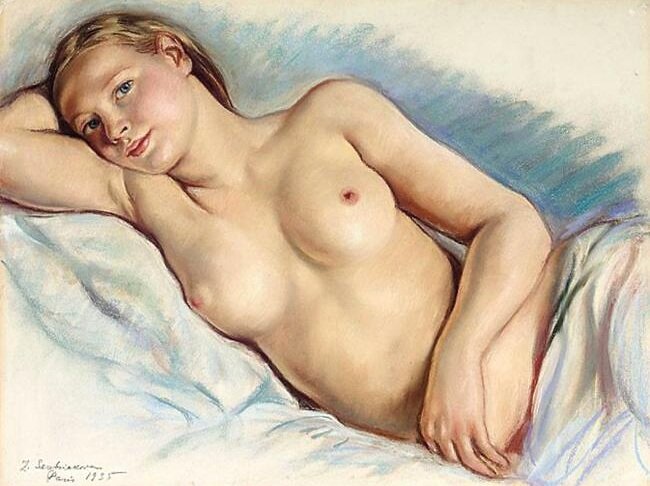
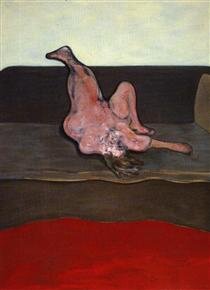


František Kupka, 1909-10, Solomon R. Guggenheim Museum, New York Gift, Mrs. Andrew P. Fuller, 1968

Amedeo Modigliani, 1917, Solomon R. Guggenheim Museum, New York, Solomon R. Guggenheim Founding Collection, By gift
"When Amedeo Modigliani moved from Italy to Paris in 1906, the leading artists of the avant-garde were exploring the forms and construction of “primitive” objects. Inspired by Paul Gauguin’s directly carved sculptures, which were exhibited in a retrospective that year, Constantin Brancusi, André Derain, Henri Matisse, and Pablo Picasso began to make archaizing stone and wood sculptures. Brancusi, with whom Modigliani developed a close friendship, exerted a strong influence on the Italian; this is particularly obvious in his attempts at carving between the years 1909 and 1915, when he made idol-like heads and caryatids with monumental and simplified forms.
Modigliani’s sculptural concerns were translated into paint in Jeanne Hébuterne with Yellow Sweater, in which he portrayed his young companion as a kind of fertility goddess. With her highly stylized narrow face and blank eyes she has the serene countenance of a deity, and the artist’s emphasis on massive hips and thighs mimics the focus of ancient sculptures that fetishize reproduction. Both this work and Nude, with their simplified, elongated oval faces, gracefully attenuated noses, and button mouths, suggest the artist’s interest in African masks.
Modigliani painted the human figure almost exclusively and created at least 26 reclining female nudes. Although the impact of Modernist practice on his art was great, he was also profoundly concerned with tradition; the poses of Nude and similar works echo precursors by Titian, Goya, and Velázquez. Nevertheless, Modigliani’s figures differ significantly in the level of raw sensuality they transmit. His nudes have often been considered lascivious, even pornographic, in part because they are depicted with body hair, but perhaps also due to the artist’s reputation for debauchery. His nickname, Modi, rhymes with the French word maudit (accursed), a name he very likely acquired because of his lifestyle. Modigliani died of tuberculosis and complications probably brought on by substance abuse and hard living. The tragic fact that Jeanne Hébuterne, pregnant with their second child, committed suicide the next day has only contributed to the infusion of romantic speculation concerning Modigliani’s work."
Jennifer Blessing

Amedeo Modigliani, 1917, Expressionism, Museum of Modern Art (MoMA), New York City, NY, US

Rene Magritte, 1943, Carcassonne, France, Surrealism: Royal Museums of Fine Arts of Belgium, Brussels, Belgium

Henri Matisse
1907
Baltimore Museum of Art (BMA), Baltimore, MD, US

Pablo Picasso,Musée Picasso, Paris, France1934, Surrealism

François Boucher (1703-1770), Musée de Beaux Arts Montréal

Amedeo Modigliani, 1917, Expressionism, Barnes Foundation, Lower Merion, PA, US

Amedeo Modiglian, 1916, Expressionism, E.G. Bührle Foundation, Zürich, Switzerland

Amedeo Modigliani, 1917, Expressionism, Allen Memorial Art Museum (AMAM), Oberlin, OH, US